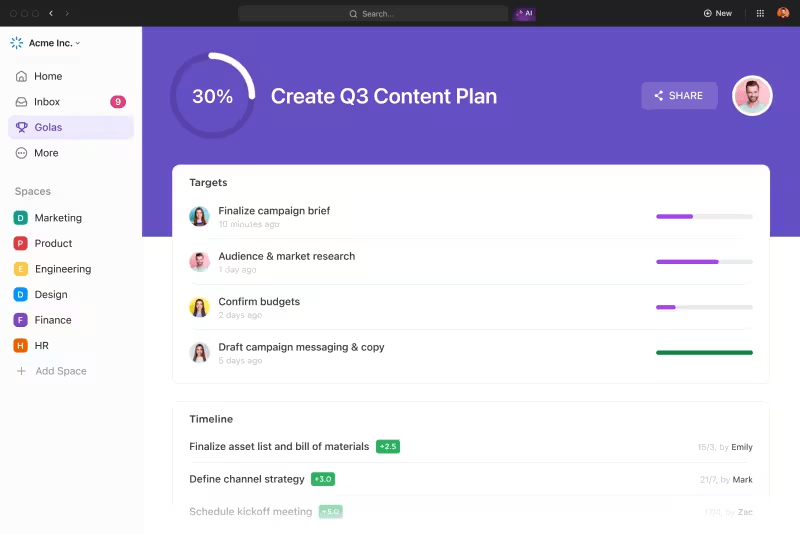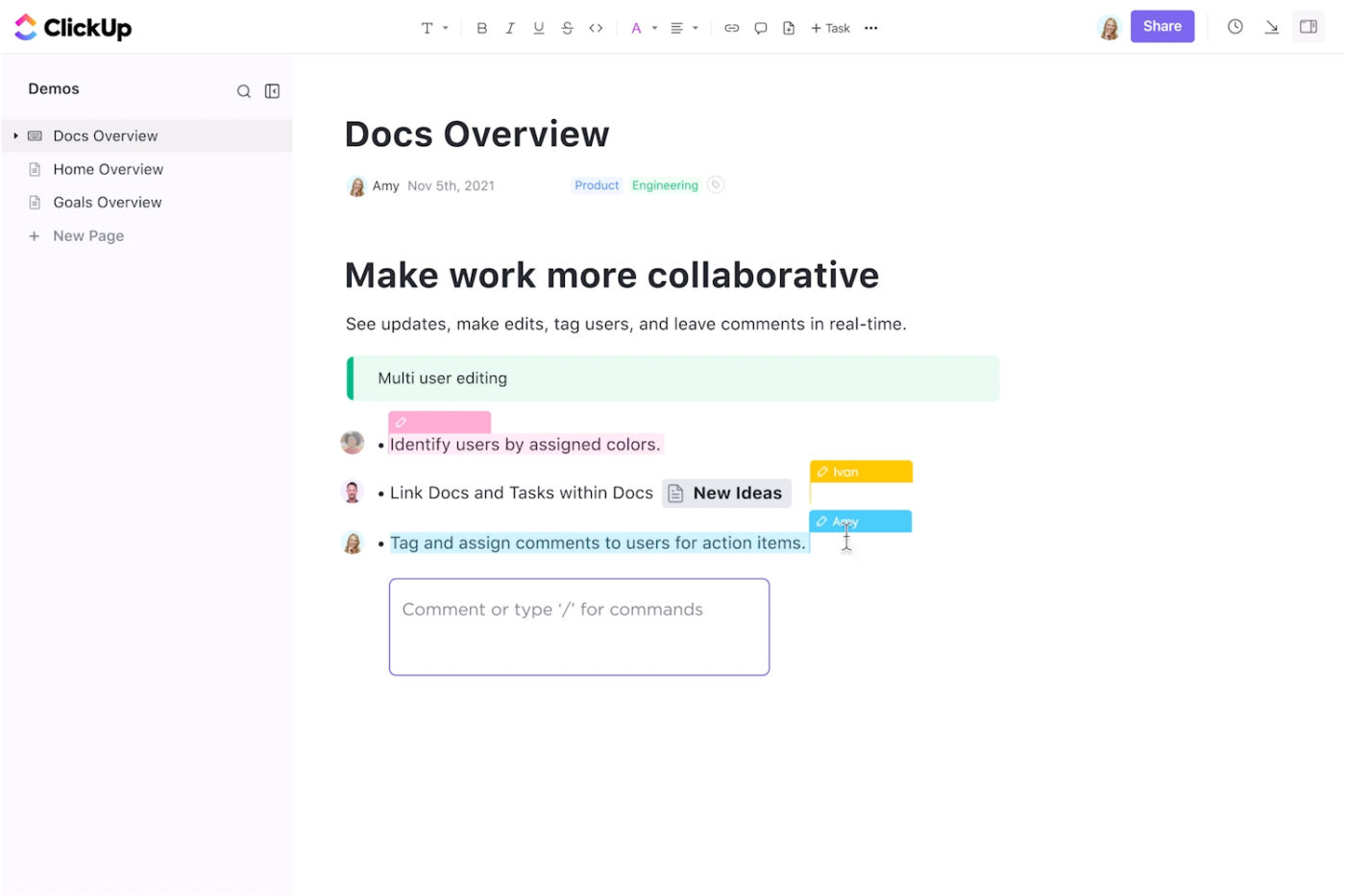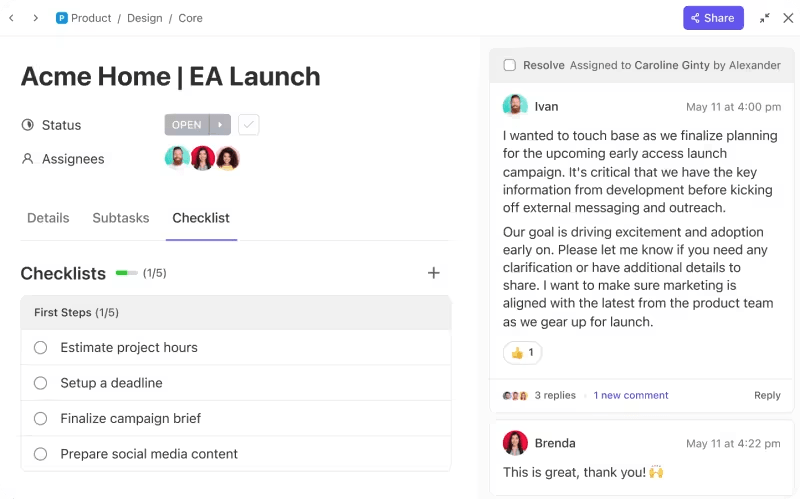

Let’s consider two entrepreneurs: one hoards every dollar, constantly focuses on losses, and ignores growth opportunities; the other invests in marketing, upskilling, and constant learning.
This contrast highlights the scarcity vs. abundance mindset.
The first entrepreneur, trapped in scarcity, remains stagnant. The second embraces abundance, seizes opportunities, and fosters growth.
Whether directed toward time, money, or risks, a scarcity mindset acts like horse blinders, limiting one’s potential. But shifting to an abundance mindset isn’t just motivational fluff—it’s a transformative journey that can redefine how one approaches challenges in life and business.
Ready to make this pivotal shift? In this blog, we will explore the difference between a scarcity mentality versus an abundance mindset. We will also learn how to transition from these seemingly negative emotions to feelings rooted in abundance.
Understanding the Scarcity Mindset
A scarcity mentality refers to the belief that there’s never enough to go around. It’s the voice in your head that says:
- “Someone else will get the promotion before me!”
- “I can’t afford that!”
- “There’s not enough time…”
This perspective can be paralyzing, leading to missed opportunities and unfulfilled potential.
Meet Mike. He thinks of workplace interactions as a zero-sum game, where a colleague’s gain automatically means his loss. He worries that sharing his ideas will make him less valuable. So, he keeps his thoughts to himself and competes with his teammates. His scarcity mentality creates tension and stifles creativity.
Mike’s behavior highlights classic scarcity mindset symptoms:
- Constant worry about running out of resources
- Fear of missing out on opportunities
- Increased stress and burnout
- Feelings of loneliness and isolation
Even when achieving goals, people with a scarcity mindset often focus on what’s missing rather than their accomplishments. They experience a ‘treadmill effect’—putting in effort but feeling stuck.
Remember: a scarcity mindset isn’t just about money—it can affect how you view time, relationships, and opportunities.
For example, you might hoard information at work, fearing that sharing your knowledge will lead to someone else taking credit for it. Or you might avoid networking events, believing there aren’t enough meaningful connections to go around.
Fun Fact: The Chinese word for crisis is Wei Ji( 危机). Wei means crisis, while Ji means opportunity. In ancient Chinese philosophy, opportunities often arise from crisis.
Signs you have a scarcity mindset
How can you tell if you’re living with a scarcity mindset? Often, it happens unconsciously, causing you to spiral into a cycle of lack without even realizing it.
Recognizing a scarcity mindset can be a true turning point.
Here are some signs to help you assess whether you might be operating from this limited perspective:
- Constantly worrying about resources, whether it’s savings, hours in the day or chances for advancement
- Hoarding resources because of the fear that you will not get more in the future
- Comparing yourself to others (their job, salary, or lifestyle) and feeling inadequate
- Playing it safe and missing opportunities that could lead to growth and fulfillment
- Not appreciating what you have by worrying about tomorrow
Recognizing these signs is the first step toward breaking free from a scarcity mindset. Once you know these patterns, you can shift your perspective toward abundance.
Did You Know? Scarcity mindset and Abundance mindset are terms coined by Stephen Covey in this best-selling book, ‘The 7 Habits of Highly Effective People.’
Embracing an Abundance Mindset
An abundance mindset means that there are enough resources and opportunities for everyone. It’s about seeing possibilities rather than limitations.
People with an abundance mindset think:
- There are always new opportunities to learn and grow
- Collaboration leads to greater success than competition
- Your potential is limitless
- Helping others succeed doesn’t diminish your success
- Failures are learning opportunities, not final verdicts
This attitude breeds confidence and leads to overall better well-being.
Meet Lisa. She truly believes that collaboration can elevate her team’s efforts, and she knows plenty of resources are available. Instead of hoarding her budget ideas, she shares her plans openly, inviting Mike to contribute his insights and suggestions. This openness promotes team core values such as inclusivity, teamwork, and commitment to excellence.
Embracing an abundance mindset doesn’t mean ignoring real-world limitations. Instead, it’s about approaching challenges with creativity and optimism.
This concept is rooted in human ingenuity. For instance, instead of thinking, “I don’t have enough money to start a business,” someone with an abundance mindset might ask, “How can I leverage my existing resources to get started?”
Difference between Scarcity Mentality and Abundance Mindset
The table below summarizes the key differences between abundance and scarcity mindsets.
Understanding these contrasts can help you identify your current perspective and guide you toward a more positive and growth-oriented approach.
| Aspect | Scarcity mindset | Abundance mindset |
| Definition | The belief is that resources are limited and competition is necessary. | The belief is that resources and opportunities are plentiful. |
| Example behavior | Hoarding money, ideas, or time; reluctance to share. | Investing in growth, sharing ideas, and collaborating. |
| Thought patterns | “I can’t afford that!” or “There’s not enough time.” | “How can I leverage my resources?” |
| Emotional impact | Constant worry, stress, feelings of inadequacy. | Confidence, optimism, and openness to collaboration. |
| Approach to opportunities | Misses opportunities due to fear of loss or competition. | Seizes opportunities and views failures as learning moments. |
| Social interactions | Competitive; often leads to isolation and tension with others. | Collaborative; fosters creativity and teamwork. |
| Signs of mindset | Worrying about running out of resources; comparison with others. | Focus on growth; and appreciation for what one has. |
| Long-term Effects | Stagnation and burnout; feeling stuck despite efforts. | Continuous growth and fulfillment; seeing potential in challenges. |
How to Cultivate an Abundance Mindset
Shifting from a scarcity mindset to an abundance mindset is a journey that requires conscious effort and practice. To support this transformation, we’ll explore powerful strategies using ClickUp, a versatile project management and productivity platform.
ClickUp offers a range of features designed to streamline your work and boost efficiency, which can be leveraged to reinforce an abundance mindset in your daily life.
Let’s delve into six key strategies to help you cultivate an abundance mindset, integrated with ClickUp’s tools to make your journey smoother and more effective.
1. Set goals
We often miss celebrating wins by getting lost in chasing newer tasks. This is why it’s crucial to set small goals that are part of your larger professional journey. These goals can be anything: personal development goals or goals for professional growth.
Setting small goals serves a twin purpose: First, it can prevent you from being overwhelmed with large targets. Second, it reminds you to take a moment and pat yourself on the back.
ClickUp Goals
ClickUp Goals allows you to break larger objectives into smaller, actionable tasks, making it easier to stay organized and focused. Plus, you can set deadlines and reminders to help you stay on track.

ClickUp Goals also visually represent your progress, such as charts and percentages. This feature helps you see how far you’ve come and keeps you motivated as you hit milestones.
ClickUp SMART Goals Template
ClickUp also has a template to smooth the process further. The ClickUp SMART Goals Template is designed to help you set clear and achievable objectives using the SMART framework—Specific, Measurable, Achievable, Relevant, and Time-bound.
With this template, you can:
- Track milestones and deadlines, allowing you to monitor your progress over time
- Collaborate on goals, adding comments and updates to keep everyone informed and engaged
- Visualize your goals and progress through ClickUp’s dashboard, providing a clear overview of your achievement
Also Read: 10 Ways to Be More Productive at Work
2. Foster collaborative relationships
A scarcity mindset often breeds unhealthy competition and an individualistic approach. To cultivate an abundance mindset, you must do the reverse: foster collaborative relationships.
Successful entrepreneurs and tech leaders echo this idea.
For instance, Sam Altman, former president of Y Combinator, emphasizes that the company you keep significantly influences your ability to recognize and courageously pursue opportunities.
When you surround yourself with supportive and like-minded individuals, you create an environment rich in creativity and opportunity.
Here’s how to cultivate rich relationships:
- Build connections with inspiring people who share a positive outlook
- Seek out colleagues, friends, or mentors who believe in abundance
- Practice open communication within your circle
- Celebrate others’ successes and achievements
- Create a culture where everyone thrives by cheering each other on
This approach replaces unhealthy competition with collaboration, nurturing an abundance mindset that benefits everyone involved.
ClickUp provides a seamless platform to foster collaborative relationships with its collective features. ClickUp Spaces creates a centralized space where team members can collaborate on projects, share documents, and access resources. This helps keep everyone aligned and informed.
ClickUp Spaces

Spaces provide visibility into the progress of ongoing projects. Team members can see each other’s tasks, deadlines, and contributions in real time. This transparency encourages open communication as everyone can track the project’s status and identify where they can offer support.
3. Practise gratitude
By acknowledging and appreciating what we have, we shift our focus from lack to abundance.
Here’s how to incorporate gratitude into your daily life:
- Start a daily gratitude practice
- Recognize both big and small blessings (e.g., supportive friends, delicious meals, sunny days)
- Express appreciation to friends, supporters, and colleagues
- Cultivate a habit of recognizing abundance, no matter how subtle
This exercise helps reinforce a culture of appreciation and trains your mind to spot the abundance in your life.
ClickUp offers an ideal platform to support your gratitude journey. Use ClickUp Docs to jot down three things you’re thankful for daily. This digital journal allows you to track your entries over time, making it easy to look back and see how much you have to be grateful for.

Incorporate visuals in your gratitude documents. Use images, quotes, or even doodles representing what you’re thankful for. Visual elements can make your gratitude practice more engaging and can help evoke positive emotions.
4. Embrace continuous learning
An abundance mindset is rooted in the belief that you can always grow and improve.
Embracing continuous learning helps your own mindset to evolve. It keeps you open to accepting new possibilities and opportunities. Set aside time for regular skill development, seek out diverse perspectives and experiences, and challenge yourself to learn something new every day.
ClickUp Brain can be a valuable asset in this journey. Use it to generate learning resources, summarize complex topics, or create personalized study plans.

This can accelerate your learning process and help you stay on top of new developments in your field, reinforcing the idea that knowledge and opportunities are abundant.
5. Reframe challenges as opportunities
Adopting a growth mindset is crucial in reframing challenges as opportunities. This perspective, closely aligned with an abundance mindset, views obstacles not as insurmountable barriers but as chances to learn, innovate, and grow.
When faced with a problem, ask yourself, “What can I learn from this?” Look for the silver lining in difficult situations and brainstorm multiple solutions instead of fixating on the problem.
ClickUp provides powerful tools to support this mindset shift.
ClickUp Tasks
ClickUp Tasks allows you to break down large projects into smaller, actionable tasks. You can celebrate small wins along the way by tracking your progress on these tasks. This focus on incremental achievements reinforces that growth is a journey, not just a result.

ClickUp enables you to monitor the status of each task through visual indicators. Whether a task is in progress, completed, or needs attention, you can quickly see where you stand. This real-time tracking allows for immediate reflection on what’s working and what needs improvement, promoting a productive mindset.
Finally, how you take feedback is the last loop in embracing a growth mindset. This means that instead of feeling defensive or discouraged by criticism, view it as a valuable tool for improvement.
Friendly Reminder: Shifting from a scarcity to an abundance mindset doesn’t happen in a day or a month. It needs constant reiteration to train your brain to approach things differently. At its core, you are trying to change the narratives in your mind, and that requires practice. So be kind to yourself as you try and shift gears.
So, how can ClickUp support you in reframing challenges?
ClickUp Dashboards
ClickUp Dashboards help you visualize your daily, weekly, monthly, and yearly progress. Dashboards allow you to picture your tasks, goals, and projects clearly. You can customize them to display metrics that matter most to you, such as completed tasks, pending deadlines, or upcoming goals.
This visual clarity helps you recognize patterns in your work and identify areas where you excel or need improvement.

You can also customize your dashboard according to your preferences. Whether you want to focus on individual tasks, team performance, or long-term goals, you can create a layout that suits your style.
ClickUp Getting Things Done Template
To tie all these strategies together and support your journey towards an abundance mindset, consider using the ClickUp Getting Things Done Template. Based on David Allen’s GTD system, it provides a structured approach to managing tasks, projects, and priorities.
With a clear layout, it allows you to capture all your to-dos. Whether you’re juggling multiple projects or simply looking to organize your daily tasks, this template is your go-to solution for achieving a state of flow and focus.
This template helps you:
- Segment and visualize your workload and prioritize effectively
- View your tasks in multiple formats, including lists, boards, and calendars
- Streamline your process with collaborative documents for the entire team to access
Overcome Resistance to Change
Moving from a scarcity to an abundant mindset is not without its challenges. Despite using these techniques, changing your mental wiring can be difficult.
Let’s look at some of the common challenges that you must overcome to make this journey smooth:
1. Ingrained beliefs: Many individuals hold long-standing beliefs about money, success, and resources that promote a scarcity mindset. These beliefs can stem from upbringing, societal influences, or personal experiences
Solution: Focus on self-reflection and reframe these beliefs to transform into a more abundant mindset
2. Fear of failure: A fear of not achieving goals can lead to risk-averse behavior, making people hesitant to pursue new opportunities. This fear can reinforce the idea that resources are limited
Solution: Focus your energy on the growth that comes from stepping outside your comfort zone
3. Comparison culture: Social media and societal pressures often foster comparison, leading to feelings of inadequacy and lack. This can make it difficult to appreciate one’s accomplishments and resources
Solution: Practice gratitude, focus on your unique journey, and celebrate your successes often
Cultivate an Abundance Mindset with ClickUp
Transforming how you think and communicate is the crucial first step toward a more fulfilling and joyful life. By making small, intentional changes—like setting clear goals, nurturing collaborative relationships, practicing gratitude, and embracing a growth mindset—you can set the stage for a positive shift.
With the right tools and resources at your fingertips, ClickUp can make this journey feel almost effortless.
Setting your goals, visually tracking your progress through dynamic dashboards, and harnessing AI to spark new ideas all help you celebrate your achievements along the way.
Sign up for ClickUp today and watch new experiences unfold!





